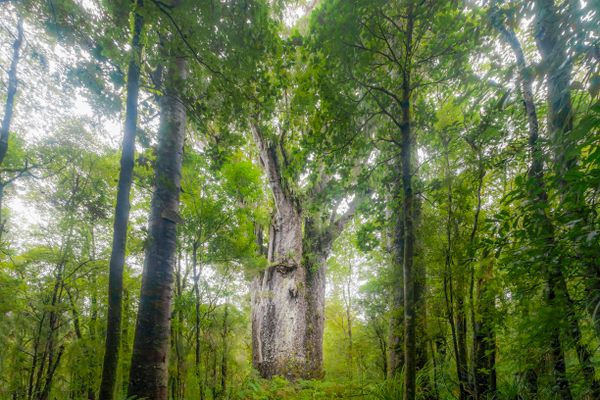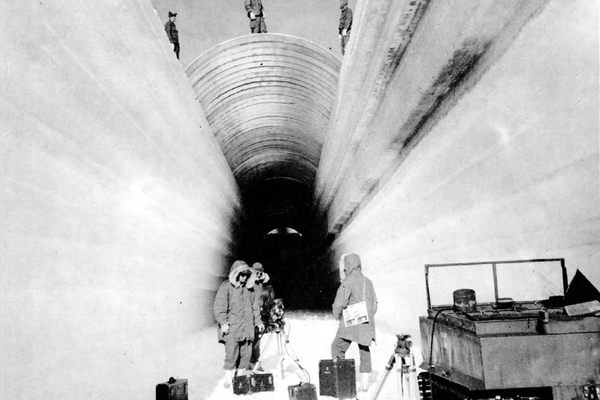Wonder Is Everywhere: A Lost Color, a Rare Giant Rat, and More From Around the Web
Get a peek into what we’re obsessed with right now.
Wonder is everywhere. That’s why, every other week, Atlas Obscura drags you down some of the rabbit holes we encounter as we search for our unusual stories. We highlight surprising finds, great writing, and inspiring stories from some of our favorite publications.

Fighting for Wildlife in a Time of War
by Adam Robertson Charlton, Hakai Magazine
The Danube Delta is one of Europe’s most important ecosystems: a rich habitat, sparsely populated by humans that stretches across Romania, Moldova, and Ukraine. Development through the 20th century threatened the region, but rewilding efforts have helped rebuild the animal populations and reintroduced kulan—a wild Asiatic donkey—to the landscape. What has the Russian war meant for these vital efforts?
The Lost Ancient Pigment That Was More Valuable than Gold
by Zaria Gorvett, BBC Future
Tyrian purple—also known as shellfish purple—was the most expensive product in antiquity, but by the 15th century the recipe for the precious, deep reddish-purple dye had been lost. For the last 16 years, Mohammed Ghassen Nouira has been working to recreate the hue from a species of sea snail he found on a beach in northeastern Tunisia.
Take a Toxic Tour of the Great Salt Lake
by Brooke Larsen, High Country News
From above, Utah’s Great Salt Lake is a patchwork of colors. Neon green, fuchsia, brown—all the result of industry and its pollution near the inland sea. “A tour around the lake reveals what environmentalists are up against,” writes Brooke Larsen, “the cumulative impacts of more than a century of unchecked development.”

Lost World of Lagoons Discovered in Argentinian Desert
by Sascha Pare, LiveScience
On a giant plateau near the Argentina-Chile border, researchers have found crystal-clear lagoons and vast salt plains that are unlike “anything any scientist has seen before,” according to Brian Hynek of the University of Colorado Boulder. And beneath the waters of the Puna de Atacama desert were hills of microbes thriving in the harsh environment—microbes resembling some of the earliest-known lifeforms on Earth. It was “the biggest eureka moment I’ve ever had in my life,” says Hynek.
Sold: A Forgotten Still Life From Dutch Master Clara Peters
by Brian Boucher, ArtNet
For almost a century, a 17th-century masterpiece painted by a Flemish woman artist sat unseen in a private collection in Belgium. Earlier this month, Clara Peters’s Still life of roses, carnations, tulips, narcissi, irises, love-in-a-mist, larkspur, and other flowers, in a wicker basket, with a butterfly and a cricket went up for auction, offering the glimpse of the vibrant work, which sold for more than $900,000.
This Rare Giant Rat Lives Only on One Pacific Island
by Sarah Kuta, Smithsonian Magazine
The first photos ever taken of a Vangunu giant rat—a rodent that lives in trees and can crack coconuts with its teeth—may also be the last ever taken. The species, which is twice as large as the average rat and lives only in the vanishing forests of Vangunu in the Solomon Islands northeast of Australia, was first described by scientists in 2017—and immediately classified as critically endangered.

New Underwater Sculptures Reside on the Floor of the Caribbean
by Paul Knowles, Toronto Star
Thirty-one sculptures sunk off the coast of Granada recently became the latest additions to a unique underwater sculpture garden accessible only to fish and scuba divers. The new statues depict characters from Spicemas, Granada’s annual carnival, as well as creatures such as the island’s endangered leatherback turtle.
Italian Officials Secure Leaning Tower in Bologna to Prevent Collapse
by Associated Press
In the Middle Ages, more than 100 towers stood in Bologna. Today that number is 22—and Italian officials are working to ensure they are preserved. The city has announced plans to shore up one of the Two Towers, iconic fixtures in the city skyline. The Garisenda Tower, the shorter of the two, has been leaning since it was built in the 12th century, but is now in danger of collapse.


































































Follow us on Twitter to get the latest on the world's hidden wonders.
Like us on Facebook to get the latest on the world's hidden wonders.
Follow us on Twitter Like us on Facebook